#grand trunk railway
Explore tagged Tumblr posts
Text

Grand Trunk Railway System.
#vintage illustration#vintage advertising#trains#railroads#railroad travel#train travel#grand trunk railway#grand trunk railroad
2 notes
·
View notes
Text

"FINISHING UP THE GRADE SEPARATION," Toronto Star. August 12, 1912. Page 2. ---- This view shows the Grand Trunk tracks depressed through the southern section of Parkdale. The picture was taken from the Dufferin street bridge, looking westward. At the left is the cut where the steps leading to the Exhibition Grounds are being built.
#toronto#grand trunk railroad#railway construction#canadian national exhibition#infrastructure construction
0 notes
Text













Yellowhead Pass National Historic Site, BC
The Yellowhead Pass is a mountain pass across the Continental Divide of the Americas in the Canadian Rockies. It is on the provincial boundary between the Canadian provinces of Alberta and British Columbia, and lies within Jasper National Park and Mount Robson Provincial Park.
Due to its modest elevation of 1,131 m (3,711 ft) and its gradual approaches, the pass was recommended by Sir Sandford Fleming as a route across the Rocky Mountains for the planned Canadian Pacific Railway. The proposal was rejected in favour of a more direct and southerly route, through the more difficult Kicking Horse Pass, which was opened in 1886. Later the Grand Trunk Pacific and Canadian Northern Railways used the Yellowhead Pass for their main lines, built c. 1910–1913, and the main line of their successor, the Canadian National Railway, still follows the route. Via Rail's premier passenger train, the Canadian; the Jasper – Prince Rupert train; and the Jasper section of the Rocky Mountaineer use the Yellowhead Pass, which is now used also by the Yellowhead Highway.
It is believed that the pass was named for Pierre Bostonais (nicknamed Tête Jaune, French for "yellow head", because of his blond hair), an Iroquois-Métis trapper employed as a guide by the Hudson's Bay Company. Bostonais led one of the first expeditions for the company to what is now the interior of British Columbia through the pass in 1820.
Source: Wikipedia
#Yellowhead Pass National Historic Site#Mount Robson Park#Rocky Mountains#Northern Rockies#travel#original photography#vacation#tourist attraction#landmark#landscape#summer 2023#Canada#woods#forest#flora#nature#countryside#fir#pine#Portal Lake#Jasper National Park
22 notes
·
View notes
Text

The Haunted Atlas
Deane House - Calgary, Alberta, Canada
51°02′43″N / 114°02′44″W
Haunted manor home with a violent history in Calgary, Alberta. The Deane House began as a luxurious private residence and is now a historical site with a restaurant.
History
The Deane House began as the vision of Superintendent Captain Richard Deane of the North West Mounted Police. At the turn of the 20th century, Deane was sent to the rough frontier town of Fort Calgary, located at the confluence of the Bow and Elbow Rivers. The existing superintendent's home at the fort was not good enough for England-born Deane and his wife, and so in 1906 he had a new home built. Construction cost was $6,200. When finished, the new home was the best residence in existence for someone in the mounted police.
Tragically, Deane's wife never got to live in the house, or even see it. She became ill and died in Lethebridge, Alberta. Deane lived in the manor home and performed his duties until the fort closed in 1914 and the land was sold to the Grand Trunk Pacific Railway. Deane went back to England. The railway company demolished all of the fort buildings except the house, turning it into a residence for the rail station agent. Within a year, the company moved the entire house to a different location on the property.
In 1929, the rail company sold the house to C. L. Jacques, an entrepreneur who moved the house again, across the Elbow River. The engineering job was remarkable for the time, and the move was featured in the media. In its new location, the Deane House became a boarding house and descended into seediness. The violent chapter in the house's history began.
In 1933, a suicide occurred there. A 14-year-old boy who suffered from epilepsy became despondent at the tauntings of his schoolmates and ended his own life in the attic. He lived in the boarding house with his father. During World War II, the house became infamous for prostitution, and military personnel were ordered to stay away from it. Jacques sold the house in 1943 to Alex Brotherton, who continued its operation as a boarding house.
A gruesome murder-suicide took place there in 1952. A man stabbed his wife to death in front of their two children and then killed himself. There are unconfirmed reports of other murders. A man was supposedly shot and killed on the front porch, and another man was said to be murdered inside.
Natural deaths occurred at the house too. Brotherton's daughter, Alfena Cunningham, died there in 1965 and Brotherton himself in 1968.
The house deteriorated, and in 1973 the city of Calgary stepped in and purchased it with the intention of restoring it in time for the city's centennial in 1975. A studio for artists and a teahouse existed there until the early 1980s. It then became what it remains today.
Haunting Activity
Stories of ghosts had been associated with the Deane House and grew during the 1960s and 1970s. An exorcism was performed in the 1990s, but ghost stories persisted.
The parlor of the house, now a bar, is one of the most active areas. The smell of pipe tobacco has been reported, even when no one is smoking. It is believed to be a sign of Brotherton, who used to like to sit in the parlor and smoke a pipe. Some visitors have seen his pipe-smoking apparition sitting in the bar. A nonworking telephone in the bar rings by itself.
Also active is the attic, where the epileptic boy committed suicide. Storage cupboards have a stain on them that resembles blood, which cannot be washed away.
The ghost of a Native American is seen in the house; no one knows his identity. He appears wearing a long-sleeved shirt and a vest; his long hair is tied in a single braid. One visitor saw the apparition in the basement. The man told her she should not be in the house because the site was sacred.
An apparition seen during the 1970s was that of a man in a black cloak, visible to the knees, who walks down the stairs and out the front door.
Other phenomena include an antique piano upstairs that plays by itself, the sounds of footsteps, strangely moving currents of air, as though someone is walking past, and objects that move about on their own.
Text from The Encyclopedia of Ghosts and Spirits, Third Edition by Rosemary Ellen Guiley (Checkmark Books - 2007)
#the haunted atlas#deane house#calgary#alberta#canada#ghosts#haunted locations#hauntings#apparitions#spirits
4 notes
·
View notes
Photo
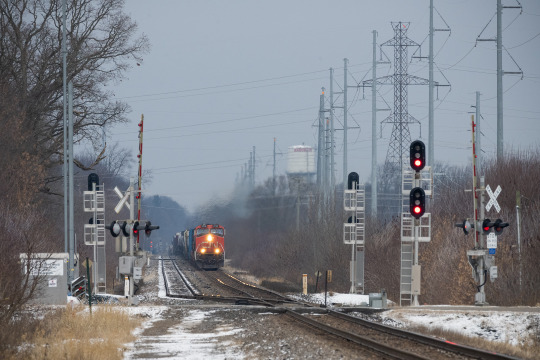
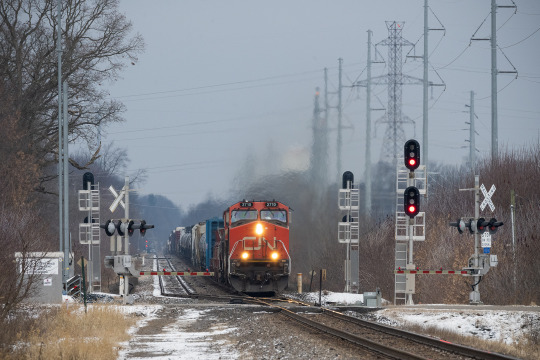




On the Grand Trunk
Here’s an eastbound train on the former Grand Trunk Railway, now Canadian National. The location is at Knight Street, east of Marcellus, Michigan, at milepost 138 (from Chicago). The second locomotive is interesting: a BC Rail GE C44-9WL, which is nearly 28 years old now. There was a DPU of the CN in this train as well.
Six images by Richard Koenig; taken January 21st 2023.
#railroadhistory#railwayhistory#canadiannational#grandtrunk#grandtrunkrailway#c44-9#c44-9wl#marcellusmi#telemash#telephoto#longlens
34 notes
·
View notes
Text
The Wonders of Old New York
When engaging with the charming society of New York, patience is a virtue. Avoid rushing through your romantic dalliances. Take your time exploring the city. Spend a few days immersing yourself in its wonders. Reconnect & expand your network of acquaintances. Survey the bustling markets to discover where you can find the best deals & fresh ideas.
If you have a favored establishment for your shopping visit it. Greet your old friends warmly, regardless of the state of their hairlines. Venture out to gather insights but be mindful not to indulge excessively in liquid lunches.
Patience, once again, is key. Allow yourself the luxury of extra time.
Visit the lead retail stores to glean inspiration from their impressive displays. Learn the art of window dressing, no matter your trade—whether it be christening caps, caramels, corsets, shoes, soda water, or even burial cases. A thoughtfully arranged and eye-catching display captures attention and leaves an impression far more effective than a haphazard presentation.
Embrace the rhythm of the city & let New York’s charm unfold before you at its own magnificent pace. As you explore the bustling streets of New York City, hunt for new articles to enhance your inventory & attract your tourists. Keep an eye out for novelties—these are treasuring that appeal to everyone, except perhaps those who prefer hairs in their butter. Year by year, the demand for unique & innovative items continues to grow.
Should you find the supply of novelties lacking, don’t hesitate to fall back on the tried & true. Stock up on “chestnuts”—those classic, well-loved stories & items. Consult with seasoned salesmen & ask if they have any fresh tales or products. Engage with the locals & let them show you what’s new, novel, & delightful. This will help you identify what your own town might need to charm & satisfy tourists from nearby crossroads, hamlets, & villages.
Remember, the art of entertainment is invaluable & ever rewarding when executed well. And New Yorkers are masters of this art.
Now that you’ve decided to extend your stay, take advantage of the opportunity to gather useful information that can save you money, reduce travel, & minimize inconvenience. In this grand city, such knowledge is plentiful.
So, immerse yourself fully in the wonders of Old New York. Given that New York City is the largest metropolis on the American continent & practically the world unto itself, it’s certainly worth your while to explore & experience as much of it as possible.
When your business brings you to New York, see if you can combine pleasure with your professional duties. Witness the latest fashions, observe how people conduct themselves at hotels, theaters, churches, & the various resorts around the city where people gather for leisure & refreshment. Do not claim that you can’t afford this—because you can. Absorb the latest trends & fill your trunk with new goods. Take notes on how you’ll dress & what you’ll wear upon returning home. Within three weeks, you’ll have the entire town buzzing, moving from place to place & showcasing evidence that you’ve been somewhere & brought something back.
Visit the theaters. Attend the churches. Take time to enjoy the parks. Ride the entire length of the elevated railway on each side of the Island from the Battery to the end of the road, & this as far into the country as you can go & see how much there is of New York City. Don’t content yourself merely by seeing what is to be seen directly on the Island of Manhattan, generally known as the city of New York.
Go down to the Battery or South Ferry, take a steamboat ride to Bedloe’s Island, & walk around the Bartholdi Statue. Twenty-five cents pays the steamboat fare there & back.
Take the little steamer which plies every hour between the Battery & Governor’s Island. See where the soldiers who are here to guard the city of New York from invasion are quartered. See where General Hancock lived so long. Walk around & see how nicely everything here is kept. Go into the museum wherein are to be found thousands of relics of battles by sea & land. Visit the fortifications & get an idea how war is carried on—in theory if not in practice. The little boat runs to & from the city to Governor’s Island every 30 minutes as part of the Government Service, carrying over & bringing back without charge those who would make the trip.
Take a boat to Staten Island from the Battery & put in an afternoon there witnessing the games & amusements which are furnished for the recreation of ten thousands of people who go there each week to enjoy an eight-mile steamboat ride across New York Bay & eight miles return.
Ride over Staten Island or a portion of it by carriage. It’s one of the most enjoyable trips. There are good livery stable establishments to be found on Staten Island, especially at the first landings. The roads are generally very good & as one drives to the higher ground three or four hundred feet above the sea, the view of land & ocean, cities & villages, lakes, bays, ponds & creeks, with threads of railway reaching off into the distance creating a very charming picture, that you’ll never forget.
Visit Coney Island where the so-called mediocrity of New York gathers to the number of twenty thousand on a week day, & one hundred thousand on a Sunday.
You can make the trip on the large iron steamboats from the Battery to Coney Island & return at any time during the day for 50 cents the round trip, or you can go by cars two or three different lines at the same rate of fare. At Coney Island you can roll in the sand, wade into the ocean as far as you feel like going, eat clams, drink ginger ale, & other beverages o refresh the arid tonsils. Take in 100 or more variety shows & see men & women, boys & girls, lovers & sweethearts, babies, dogs, etc. Enjoying surf bathing, which is here to be had in abundance, with officers handy to keep you from getting in beyond your depth, or from trying to cross the ocean on foot.
Coney Island is a curiosity. Once it was a barren stretch of sand worth something like $500,000 or less than nothing. Now it’s a summer city of the beach, a sort of piratical rendezvous where one man appears to be bishop, king, commissioner, mayor, levier of taxes, collector of customs, comptroller of political destinies, etc., so that Robinson Crusoe on his lonely Island wasn’t more of a monarch over what he surveyed than is the head of political-financial combination governing that part of New York known as Coney Island. It’s a curiosity that should be seen, as it alone would give you something to talk about for a month.
A very delightful trip is that by steamer to Rockaway Beach & to Far Rockaway, especially if you want a sniff of ocean air—clean, fresh, & invigorating. Or you can have a steamboat ride to Long Branch & return for a few dimes.
Another charming trip is up the East River, past Blackwell’s Island, Ward’s Island, Fort Schuyler, out into Long Island Sound, past Hart’s Island, which is the pauper burial ground, & then a mile or two beyond to Glen Island, which has been fitted up in magnificent style as a summer resort, & where the old-fashioned clam bake, together with meat, drink & musical accompaniments can be enjoyed ad libitum. After that, you can wander about to see the curiosities, rest in the shade, enjoy the sea breeze, listen to music.
Another good thing to do is to visit the Charity & Correction institutions of New York. To do this properly call at the corner of 11th Street & Third Ave., at the office of the Commissioners of Charities & Corrections. Go into the office & introduce yourself to Mr. Simmons, Mr. Porter or Mr. Brennan, who are the three Commissioners of Charities & Corrections for the City of New York, & who have about sixteen thousand persons under their care, comprising the prison, almshouse, workhouse, & hospital population of the city, & their attendants. You’ll find these gentlemen well-posted, very pleasant & always willing to give or afford strangers visiting New York every possible opportunity to acquaint themselves with the workings of the Charity & Correction institutions of the city, which includes the Tombs, all the police courts, the prisons, hospitals, insane asylums, workhouses, & educational establishments, wherein children of the poor & unfortunate are taught. After that you’ll have obtained a pass from the Commissioners. Go to the foot of East 26th Street, which is on the East & the East River side of New York.
At the foot of East 26th Street, standing in the water a little way from the shore, but reached from the grounds of Bellevue Hospital, is the “dead house,” in which are kept for a day or so the bodies of those who are brought in from the city, fished out from the river, etc., and which bodies are eventually, unless claimed by relatives, taken to the pauper burial ground at Hart’s Island for interment. You can get on with a pass, if you’re alive, & if you go on dead you can get out with a cheap pine coffin costing about 21 cents.
At 10 o’clock every forenoon the large & beautiful steamer Thomas S. Brennan, named after the popular & gentlemanly Commissioner of Charities, leaves this dock on a business trip up the East River. Here you get aboard. If you’re early enough you’ll see the many prison vans or iron omnibuses filled with prisoners brought from the prisons & police courts of the city to this point for shipment to the Penitentiary on Blackwell’s Island & to the Workhouse on Hart’s Island.
The Steamer Brennan is the service of the city exclusively. Its business is to convey parties from the city to Charity Hospital on Blackwell’s Island, which is the first landing. To convey prisoners to the Penitentiary, to the large stone building, which is within a stone’s throw of the Charity Hospital.
Patients for the hospital & prisoners for the penitentiary are discharged at the same landing, where the officers receive & escort them to the hospital & the prisoners to the penitentiary, where they are sheared, bathed, etc., & assigned to the several tasks the superintendent of the Penitentiary deems them fit to work at.
Relieved of this much of her load, the Brennan goes on up the river to the Workhouse, landing there from 75 to 150 men & women each morning, who are marched off & escorted to the Workhouse, where they’re given work to do for a time altogether too short. Supplies for the inhabitants of the Island, which number several thousand, including the inmates of the Female Insane Asylum, which is also on Blackwell’s Island, are here put off for distribution.
This done, the Brennan goes on up the East River, through Hell Gate, to Ward’s Island, on which is the large Homeopathic Hospital, one of the finest of its class in the world, also the insane asylums for males. This is the largest insane asylum on the American continent. It covers several acres of ground, & is occupied by something like 2000 men, a large portion of whom are insane, while a certain percentage are sane, but are unfortunately run in here & kept appeasing the envy, malice, or ugliness of persons who delight in thus torturing those they have a spite against or by saddling their support upon the city.
After discharging the patients & guests who come to see relatives in the hospital & asylums, the Brennan returns a little way, then proceeds up the Harlem River to Randall’s Island, on which is located Mrs. Dunphy’s celebrated school for “idiotic, imbecile or feeble-minded children & homes for idiots who cannot be taught,” & other departments of this nature, all connected or attached to the Charity & Correction department. Here also is the Foundlings’ Home, where are about 400 babies, from one day to four years of age, cared for by nurses.
This takes the time till about half past 12, when the boat returns, stopping a few moments at Hart’s Island, & reaching her dock at the foot of East 26th Street somewhere about 1:30 PM, affording those who care to see a great deal in a little while an opportunity of obtaining information that, if not altogether pleasant, is certainly worth knowing. You’ll get ideas worth taking home with you.
#new york city#history#historical#reference#new york#victorian#gilded age#edwardian#time travel#20th century#writing#historical fiction
2 notes
·
View notes
Text
What-If: American Railroads — Section 2: Railroads Absorbed (part 1)
With my alternate history on American railroads, one major part of it is that President Dwight D. Eisenhower would pass a Staggers Act of 1955, which would allow railroads to innovate and expand their operations and provide healthy competition with not only other railroads, but also cars and planes. While the big railroads (like New York Central and Chesapeake & Ohio) would greatly benefit from this, the smaller railroads (like New Haven or Western Pacific) wouldn’t be as lucky… but the smaller railroads’ territories would not go to waste as from the late 1950s to the early 1970s, the bigger railroads would absorb the smaller ones. And the smaller railroads absorbed by the bigger ones will be shown below with the big railroads’ logos being above a collection of maps of the smaller railroads.




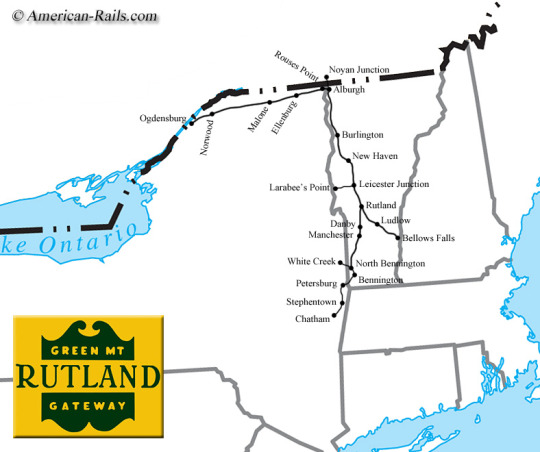


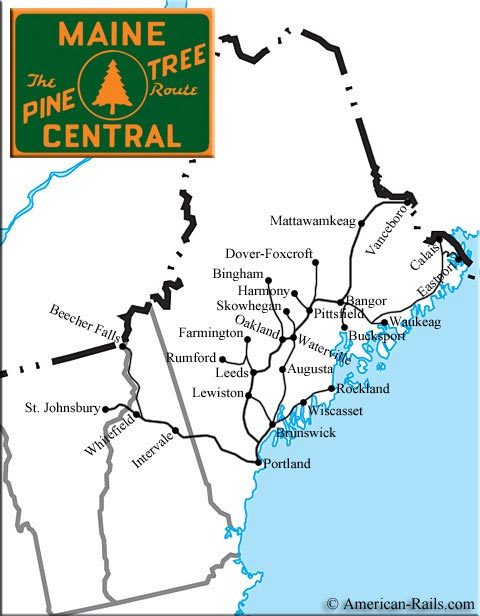
A. New York Central ⬆️.
Boston and Maine
New Haven
Delaware and Hudson
Rutland Railroad
Bangor and Aroostook Railroad
Central Vermont
Maine Central


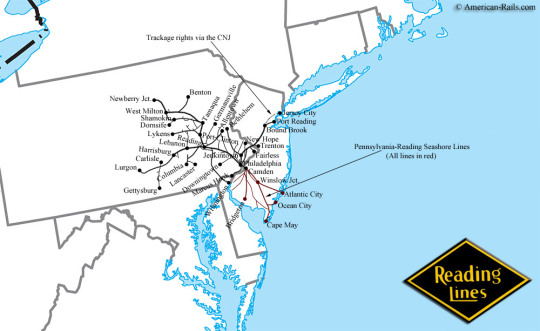
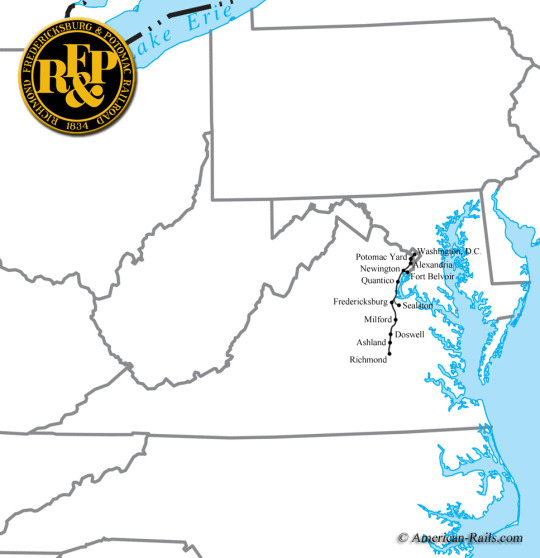
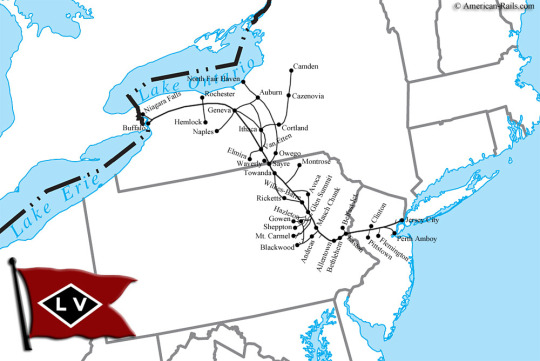
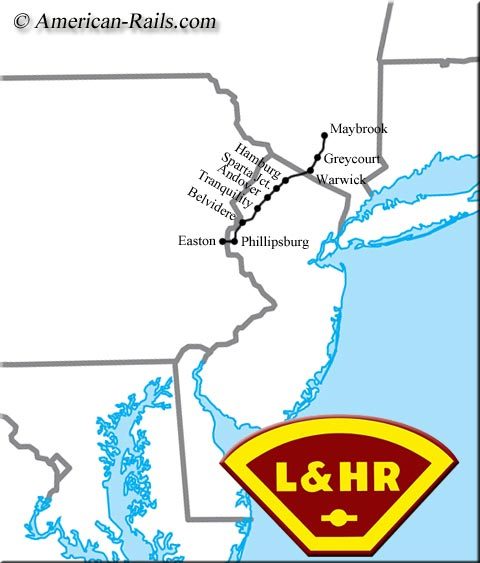

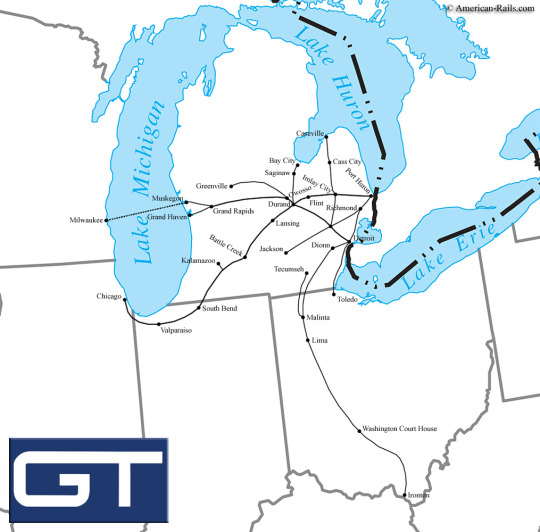

B. Pennsylvania Railroad ⬆️
Lehigh New England
Reading Lines/Railroad
Richmond, Fredericksburg and Potomac
Lehigh Valley
Lehigh and Hudson River
Central Railroad of New Jersey
Grand Trunk Western
Pennsylvania-Reading Seashore Lines



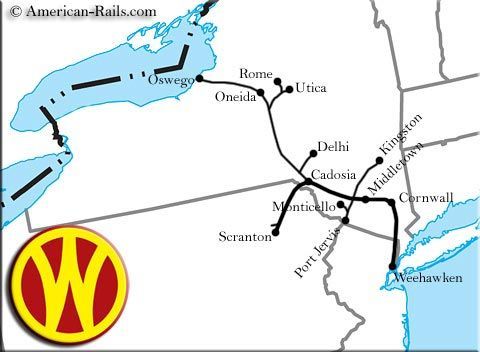
C. Chesapeake and Ohio ⬆️
Erie Railroad
Lackawanna Railroad
New York, Ontario and Western Railway

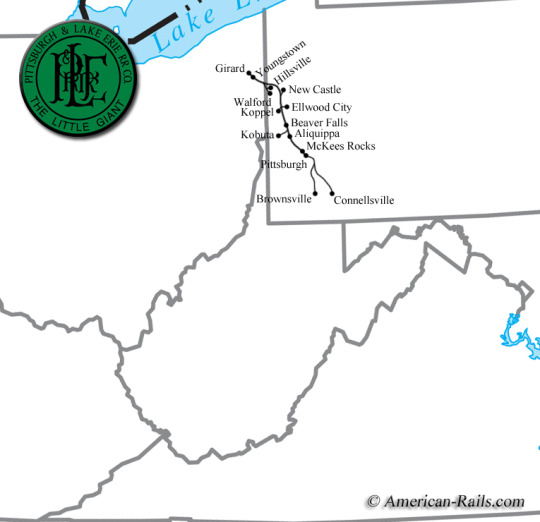
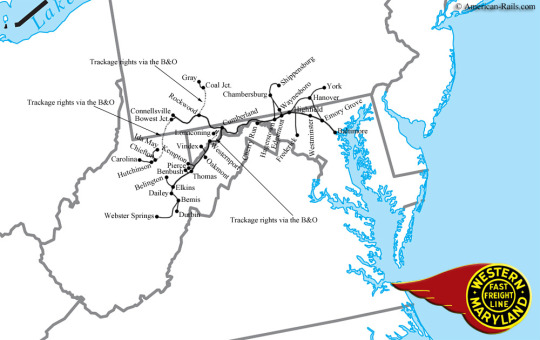


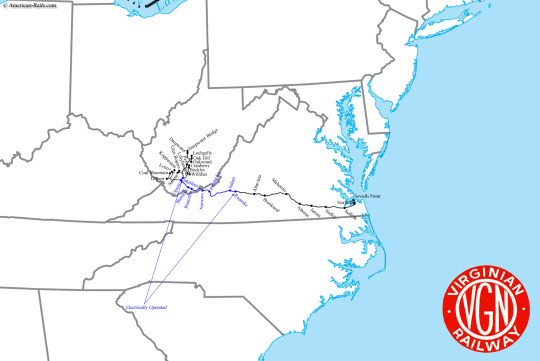
D. Baltimore and Ohio ⬆️
Pittsburgh and Lake Erie
Western Maryland
Wabash
Ann Arbor
Virginian Railway



E. Norfolk and Western ⬆️
Nickel Plate Road
(original) Norfolk Southern
#history#railroad#railroads#railway#railways#new york central#pennsylvania railroad#chesapeake & ohio#baltimore & ohio#norfolk and western#alternate history
2 notes
·
View notes
Text

Kwinitsa Station (1911) originally stood alongside the Grand Trunk Pacific Railway between Terrace and Prince Rupert, British Columbia, Canada. In 1985 it was moved to its current location on the waterfront at Prince Rupert to serve as a railway museum.
4 notes
·
View notes
Text

Here's a picture I made for @zponds. Onto a more positive note on Zachery, he absolutely loves railroads and trains (and he has since he was a toddler). And he has a lot of knowledge about trains and many railroad companies in America. And he has a selection of railroads in his top 11 and secondary 12. Zachery’s top 11 railroads are… New York Central System, Pennsylvania Railroad, Chesapeake & Ohio, Baltimore & Ohio, Union Pacific, Norfolk & Western, The Milwaukee Road, Burlington Route, Souther Pacific, Santa Fe, and Chicago & NorthWestern… and Zachery’s secondary 12 railroads are… New Haven, Southern Railway, Northern Pacific, Great Northern, Seaboard Air Line Railroad, Virginian Railway, Erie Railroad, Western Pacific, Rock Island Railroad, Lackawanna Railroad, Illinois Central, and Grand Trunk Western.
2 notes
·
View notes
Photo
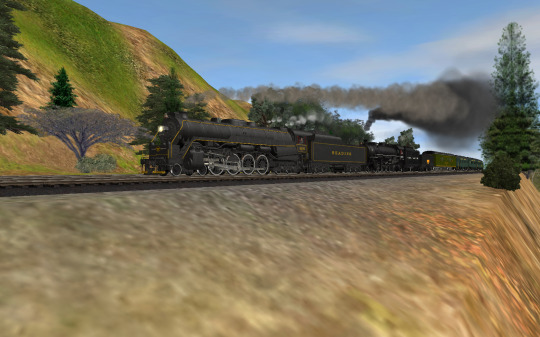
Following it's life after the Iron Horse Rambles, Reading 2102 would still take part in numerous excursions. Of these which was a doubleheader with Cuyahoga Valley Scenic Railroad (Ex Grand Trunk Western) 4070, an S3A class 2-8-2 USRA Light Mikado built by ALCO in December 1918. Unfortunately, the trip was ill-fated as the 4070 threw an eccentric rod on the Horseshoe Curve stalling busy rail traffic resulting in Conrail to ban steam operations for several years. Today, 2102 now operates on the Reading and Northern Railroad while 4070 is still currently under restoration at the Midwest Railway Preservation Society. Models and Route by: K&L Trainz, Canadian Pacific Locomotive Works, Jointed Rail, Auran, and Download Station
#RDG#Reading#Reading Company#2102#RDG 2102#Reading 2102#GTW#GTW 4070#4070#Grand Trunk Western#Grand Trunk Western 4070#Steam Locomotives#Trains#Trainz Simulator
3 notes
·
View notes
Text

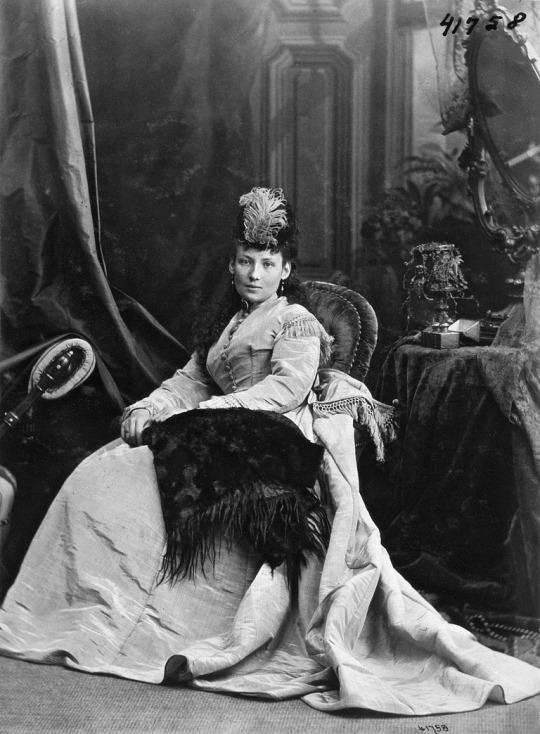
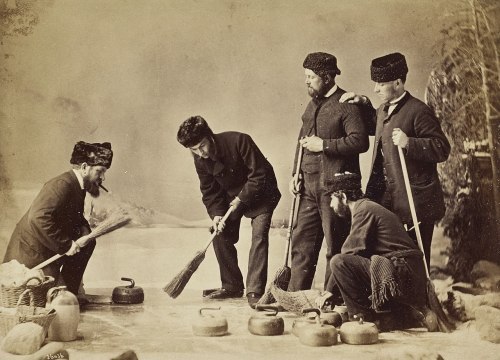
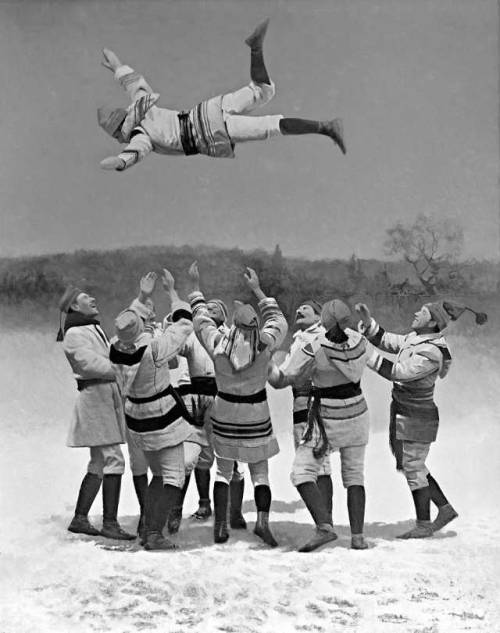
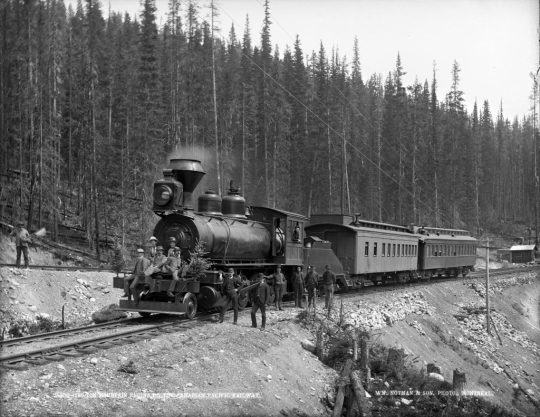
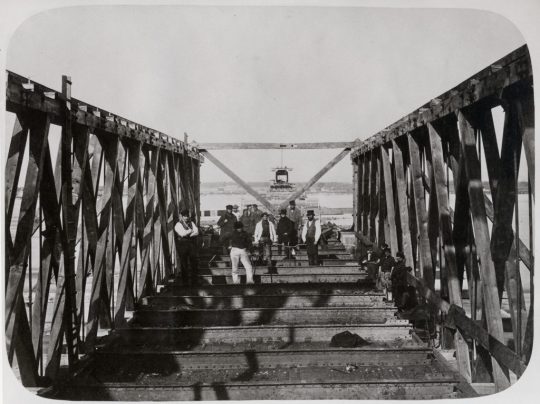
William Notman the pioneering Scottish photographer was born on in Paisley March 8th 1826.
WIlliam Notman photographed upper-class men and women in rich surroundings, but also too pictures of ordinary people, nature and the construction of Montreal's Victoria Bridge.
Notman was born and raised in Paisley where he received a decent education, which included lessons in painting and drawing.. After leaving school worked in a family firm but when it ran into financial difficulties Notman hoped to pursue a career as a professional artist. His hopes were thwarted by the expectation that he would join his father’s cloth design and manufacturing business. As it turned out, however, during a severe economic downturn, Notman fabricated client orders in order to pay down mounting debts. Fraud charges were then laid, and in 1856 he fled Glasgow for Montréal in part so that responsibility for the fraud could be laid on him and the rest of the family could avoid prosecution.
An amateur photographer, he quickly established a flourishing professional photography studio on Bleury Street,kn the city, a location close to Montreal's central commercial district, where he attracted clients who were members of the political and business elite.
His techniques predated Photoshop by about a century, but just because we can achieve in a few clicks what would have taken William Notman days of painstaking photography, painting, and literal cutting and pasting, should make his legacy more impressive, not less.
In 1858, he was commissioned by the Grand Trunk Railway to photograph the construction of Montréal's remarkable Victoria Bridge. Notman gave the Prince of Wales a maple box containing an image he had taken of the construction of the bridge as well as scenes from eastern and western Canada, which were apparently eventually shown to great acclaim to Queen Victoria.
You would imagine his studio would have been a small business, due to the era, but no, Notman's staff was some 55 strong in the 1870s) and included apprentice photographers.
He established 14 branch studios in eastern Canada and the United States, all managed by his trainees. Notman won many medals for his work in exhibitions at home and abroad. To meet the demand for landscapes and other views, he sent his photographers across Canada, recording the construction of the Canadian Pacific Railway, the rise of the western cities, the life of the plains and coastal Aboriginal peoples, the lumber trade of the Ottawa Valley, East Coast fishing, rural activities and the bustle of the cities.
Notman also became famous for the composite photographs of the snowshoe and curling clubs produced by his studio. These large creations were made up of 300 or more individual photographs, cut out and pasted onto a painted background, the first cut and pasting perhaps!?
Always community minded, Notman was involved in art associations, church societies, sports clubs and other Montréal organizations. He was also a backer of the Windsor Hotel and copartner in large holdings in Longueuil, where he had a summer home. Of his seven children, all three boys became photographers. William McFarlane Notman, his eldest son, took over the business at his death. The Notman collection, containing over 400,000 photographs, plus office records and family correspondence, forms part of the collections of the Notman Photographic Archives housed in the McCord Museum of McGill University.
When William Notman died suddenly in November 1891 after a short bout of pneumonia, management of the studio Wm Notman & Son was left to his son William McFarlane Notman, an experienced photographer in his own right
In 1957, the Notman Collection was purchased by McGill University. The 200,000 negatives, 43 Index Books, 200 Picture Books and assorted memorabilia were transferred to the McCord Museum of Canadian History.
6 notes
·
View notes
Text
Prestige Siddharth Vihar: Investment Residences in Ghaziabad
Prestige Siddharth Vihar is a residential project located in Ghaziabad that guarantees to elevate your living experience. Spread over 62.5 acres, this amazing project features more than one tower, each presenting several 2, 3 and 4 BHK flats and villas that fulfil numerous desires and alternatives. It is an attractive funding opportunity, offering a unique aggregate of affordability, profitability and outstanding connectivity.

Unparalleled Connectivity
It offers amazing connectivity to predominant roads making it an excellent desire for individuals who price comfort and accessibility. The property is strategically placed near the Delhi-Meerut Expressway, Vishwakarma Road, Grand Trunk Road (GT Road) and Greater Noida West Road ensuring seamless travel to various parts of the city. The nearest railway station, Ghaziabad Junction, is just 3 km away, whilst Indira Gandhi International Airport is about 37 km from the locality. Additionally, the area is well-related to buying destinations like Shipra Mall and Jaipuria Mall in Indirapuram making it an attractive alternative for households and professionals.
Infrastructure Development: A Catalyst for Growth
Siddharth Vihar is an area swiftly developing with several infrastructure projects. Prestige City Ghaziabad is witnessing widespread investments in avenue networks, public transportation and civic services which are anticipated to decorate first-class lifestyles for citizens. The presence of New Ghaziabad Metro Station and Electronic City Metro Station Noida Sector 63 also provides enchantment, offering smooth access to numerous components of the city. With the cognizance of infrastructure development, Siddharth Vihar is poised to become a hub for residential and commercial activities making it an attractive investment destination.
Loan Approval: A Hassle-Free Experience
At Prestige City Siddharth Vihar, we recognize the significance of trouble-free mortgage approval. Our team is devoted to ensuring that the mortgage system is smooth and green, allowing you to be aware of what subjects are most important – locating your dream home. With our help, you may enjoy a strain-loose revel, knowing that your mortgage application is in proper arms.
A Lucrative Investment Opportunity
The modern infrastructure projects and developing demand for housing in Siddharth Vihar propose that property values in this area are probably to rise. Investing in this property at the moment can yield first-rate blessings in the future making it an attractive option for each end customer and investor. With its excellent connectivity, infrastructure development and mortgage approval facilities, it offers a unique aggregate of affordability and profitability.
Experience Luxury Living at Prestige Siddharth Vihar
It is not just a residential property, it is a way of life. Our flats are designed to offer high-priced living with modern services and a serene environment. From spacious living regions to nicely appointed bedrooms, each aspect of our residences is designed to make sure that you live existence to the fullest. With more than a few amenities which include a clubhouse, swimming pool, health club and play area, you will never be brief of options to loosen up, unwind and revel in first-rate time with your loved ones.
Conclusion
This property is an extraordinary gem inside the heart of Ghaziabad offering a unique blend of luxury, comfort and connectivity. With its best infrastructure, mortgage approval facilities and rewarding investment capacity, this project is an appealing alternative for those seeking to invest in a dream home. Do not miss this opportunity to unlock the potential of Prestige Siddharth Vihar Ghaziabad. Book your home these days and enjoy the epitome of luxury living.
#Prestige Siddharth Vihar#Prestige Siddharth Vihar Ghaziabad#Prestige City Siddharth Vihar#Prestige City Ghaziabad.#investment#residential property#real estate#luxury apartments
0 notes
Text










Jasper National Park, AB (No. 4)
In 1911, the Grand Trunk Pacific (GTP) laid track through the park and over Yellowhead Pass. That same year, the GTP founded the town of Fitzhugh around the company's railway station; the town was renamed Jasper in 1913. The GTP's route across the pass was followed in 1913 by the Canadian Northern (CNoR). Both having both fallen into financial difficulty, the two railways were nationalized—the GTP in 1919 and the CNoR in 1923—and eventually merged into the Canadian National Railway (CNR) by an Order in Council. The railway was later followed by a road built between Edmonton and Jasper. The section between the town of Jasper and the eastern gate of the park was completed in 1928; however, it took another three years for the province of Alberta to complete the remaining stretch of the road into Edmonton.
By the time the GTP's railway track cleared Yellowhead Pass in 1911, there were already eight hotels established in Jasper, but they were rudimentary, and did not meet the expectations of the well-heeled clientele to which the GTP advertised. Jasper Park Lodge, the focal point of the GTP's Jasper advertising campaign, did not open until 1922, three years after the company's bankruptcy and only a year before the railway was merged into the nationally owned CNR. Like the GTP before it, Canadian National featured both Jasper park and the lodge prominently in its advertising literature.
From its founding, the town of Jasper, and later the Jasper Park Lodge, served as a hub for a variety of outdoor sporting activities. Even as Mary Schäffer Warren was becoming the first settler to visit Maligne Lake, outfitters were springing up in the park to rent out equipment and guide hikers and alpinists. The Alpine Club of Canada, formed in 1906 and sponsored through the 1920s in part by the CNR, held seven of its annual alpine camps in Jasper between 1926 and 1950. And while hunting was forbidden within park grounds, the park's facilities served as a base of operations for outfitters and guides who led wealthy hunters on hunting trips into the forest reserves outside Jasper's boundaries.
Source: Wikipedia
#Roche Ronde#Alberta#Rocky Mountains#Northern Rockies#Alberta's Rockies#travel#original photography#vacation#tourist attraction#landmark#landscape#summer 2023#Canada#woods#forest#reflection#flora#nature#countryside#fir#pine#Jasper National Park#Athabasca River#UNESCO World Heritage Site#Yellowhead Highway#Pyramid Mountain
23 notes
·
View notes
Text
Purva Soukhyam Guduvanchery | Exclusive Lands In Chennai
Introduction:
Purva Soukhyam Guduvanchery offers residential plots in Chennai. This project is inside the busy neighborhood of Guduvanchery. Whether you want to construct your dream home or make smart funding, Purva Soukhyam gives a great blend of present-day life, ease of getting the right of entry, and connectivity.

Location Advantages:
Guduvanchery is an area of Chennai that is developing speedily and is understood for its splendid transportation and growing centers. It is effectively positioned on NH-45 (Grand Southern Trunk Road), which makes it easy to get to well-known places like Tambaram, Chengalpattu, and the IT hubs of Sholinganallur and OMR. The place is without difficulty handy using the train (Guduvanchery Railway Station) and bus (which runs frequently). Nearby are places to examine like SRM University, hospitals like Chettinad Health City, and shopping malls like Gold Souk Grande Mall. The new Guduvanchery Bus Terminus and metro enlargement will make Puravankara Soukhyam Plots Guduvanchery Chennai even less complicated to get around, which makes it a famous desire for investors and people who need to shop for a house.
Master Plan:
The master plan stresses thoughtful plans and dwelling in a way that does not damage the environment. The plots come in one-of-a-kind sizes to fulfill specific desires, and there is a lot of room for customization. The community is well-organized with extensive indoor roads, lush landscaping, and clean utility zones. The plan follows Vastu policies, which make certain that the whole lot is balanced and positive. The project is supposed to build a network at the same time as putting privacy first with the aid of placing aside places for parks and different leisure centers.
Amenities:
The centers at Purva Soukhyam Guduvanchery are designed to shape the needs of cutting-edge lifestyles. The project has a safe gated front, surveillance 24 hours a day, seven days every week, and water and energy systems that paint properly. Gardens with plant life, going for walk paths, and play regions for children make this an excellent area for families to spend time collectively. The plot's commitment to sustainability is proven by way of its use of sun-powered lights, a sewage treatment plant, and rainwater collection.
Conclusion:
Purva Soukhyam Plots Chennai is a wonderful imparting for the ones seeking to invest in Chennai's flourishing actual property marketplace. Its smart region, strong infrastructure, and properly-idea-out master plan make it a brilliant region to build a domestic on the way to closing or investment to repay. At Purva, you could look ahead to consolation, community, and connection.
#Purva Soukhyam Guduvanchery#Puravankara Soukhyam Plots Guduvanchery Chennai#Purva Project Soukhyam In Chennai#Purva Soukhyam Plots Chennai#Purva Soukhyam Guduvanchery Chennai#Purva Plots Soukhyam Guduvanchery Chennai#Puravankara Soukhyam Guduvanchery Chennai#Purva Soukhyam Guduvanchery Chennai Location Map
0 notes
Photo

(Vaillancourt Fred E. (w2731)から)
Vaillancourt Fred E. (w2731)
Alias-Pseudonimo-Pseudonyme: -
Nationality-Nazionalità-Nationalité: USA
Birth/death-Nascita/morte-Naissance/mort: -
Means of transport-Mezzo di trasporto-Moyen de transport: Wagon, cart, Carro, carretto, Char, Chariot
Geographical description-Riferimento geografico-Référence géographique: USA
Inscriptions-Iscrizioni-Inscriptions: Sustained loss of both legs at West Paris, Maine, August 14, 1907, while employed as brakeman on the Grand Trunk Railway System
0 notes
Text
Omaxe Aligarh | Premium Residential Plots

Welcome to Omaxe Aligarh a top-class residential property offering premium plots in one of the fastest-developing cities in Uttar Pradesh. Known for its rich cultural history and fast-growing infrastructure, Aligarh is emerging as a desired home for homebuyers and investors alike. It offers a perfect place to construct your dream home in peaceful and serene surroundings, while also ensuring connectivity to key regions of the city.
Prime Location
It is strategically positioned in a thriving region that offers serenity and accessibility. Situated within the heart of Aligarh, this project enjoys first-rate proximity to numerous important landmarks, making it an attractive proposition for both homebuyers and traders. The city’s developing infrastructure, combined with the clean right of entry to instructional establishments, healthcare facilities, and shopping facilities, provides the enchantment of these residential plots. Whether you're seeking to settle down along with your circle of relatives or make long-term funding, It offers a balanced lifestyle with comfort and luxury.
Nearby Landmarks
One of the important thing highlights of Omaxe Plot Aligarh is its proximity to widespread landmarks inside the city. Some of the nearby locations of interest encompass:
Aligarh Muslim University: Just 15 minutes away, this renowned group provides the educational prominence of the region. Its ancient importance and global reputation make Aligarh an educational hub.
Aligarh Railway Station: The well-related railway station is ready 20 minutes from the undertaking, providing seamless connectivity to nearby towns like Delhi, Agra, and Mathura. This makes commuting hassle-free for residents who tour often.
Grand Trunk Road (NH-91): The national motorway is without difficulty handy, providing clean connectivity to Delhi and other important towns. Being close to this main dual carriageway adds to the strategic importance.
Tala Nagri Industrial Estate: Situated 10 minutes from the challenge, this industrial hub is a center for commercial enterprise and employment opportunities. Its proximity guarantees that citizens revel in each peaceful dwelling environment and get the property to monetary opportunities.
Shopping Malls and Markets: The bustling Center Point Market and the newly evolved Great Value Mall are within 15 minutes, imparting residents numerous retail and dining options for regular comfort and entertainment.
Healthcare Facilities: Top-tier hospitals like J N Medical College Hospital and Apsara Hospital are nearby, making sure that the best healthcare is continually within reach.
Project Highlights
Omaxe Aligarh In UP offers quite a number top top-rate residential plots, thoughtfully deliberate to provide sufficient space for present-day residing. These plots are to be had in various sizes, permitting owners the power to design their houses as consistent with their options and wishes. The project is designed to fulfill the needs of today’s city lifestyle even as keeping peaceful and nonviolent surroundings.
The gated community is ready with contemporary infrastructure and vital utilities, ensuring that citizens can enjoy a snug way of life. With 24/7 safety, landscaped gardens, wide internal roads, and proper drainage structures, It offers a terrific combo of luxury and capability.
Investment Potential
Aligarh is witnessing a rapid boom in phases of real estate and infrastructure development. With the metropolis expanding and improving connectivity, investing in residential plots right here gives promising returns. The growing demand for housing, coupled with the mission’s strategic vicinity and respectable developer, makes Omaxe Aligarh a sensible funding preference for the ones searching for long-term appreciation.
Conclusion
Omaxe Residential Plots Aligarh gives top-class residential plots that combine cutting-edge living with excellent connectivity to key landmarks in Aligarh. Whether you're building a home for your circle of relatives or searching out a moneymaking investment, those plots offer the precise opportunity. With its high location, current facilities, and proximity to major establishments, It guarantees a way of life of consolation and comfort. Make the clever preference today and stable your destiny in this thriving town.
#Omaxe Aligarh#Omaxe Aligarh Plots#Omaxe Plots Aligarh#Omaxe Aligarh In UP#Omaxe Residential Plots Aligarh#Omaxe Plot Aligarh#Omaxe Aligarh Price.
1 note
·
View note